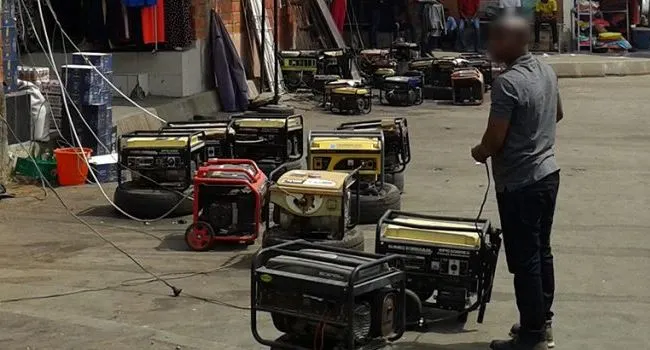
The world around us is shaped by remarkable inventions, and fiber lasers are no exception. These innovative tools have revolutionized various industries, from manufacturing to medicine, with their ability to manipulate light with incredible precision and power.
But what exactly are fiber lasers, and how do they work? This beginner’s guide will unveil the fascinating world of fiber lasers and explore their potential applications.
From Glass Fibers to Molten Metal: Demystifying Fiber Lasers
If you are thinking it will work like traditional lasers, then change your thinking because it is different. It utilizes gas to generate a laser beam, and fiber lasers employ a unique approach. They rely on specially doped glass fibers to transmit and amplify light. Here’s the breakdown:
Doped Fibers: These fibers are infused with rare-earth elements, like ytterbium, that act as the active medium. When light interacts with these elements, it gets amplified.
Pump Light Source: A separate laser diode generates a high-power “pump light” that excites the electrons in the rare-earth elements within the fiber.
Light Amplification: As the excited electrons return to their ground state, they release energy in the form of light. This light interacts with other excited electrons, causing a chain reaction that amplifies the light signal.
Beam Delivery: The amplified light travels through the fiber core, reflecting off the cladding (outer layer) and emerging as an intense, highly focused beam.
This focused beam of light holds immense power. When directed at a material, it can generate extreme heat, making fiber lasers ideal for various applications like cutting, welding, and marking.
What are the Advantages?
Fiber lasers offer a multitude of advantages over traditional cutting and welding techniques like plasma cutting, oxyfuel cutting, and arc welding.
- The highly focused beam of fiber lasers allows for incredibly precise cuts and welds, even on intricate designs and tight tolerances.
- Fiber lasers operate at significantly faster speeds compared to traditional methods, leading to increased productivity and faster turnaround times.
- The minimal heat affected zone (HAZ) associated with fiber lasers minimizes warping and deformation of the material, resulting in cleaner cuts and stronger welds.
- Fiber lasers can effectively cut and weld a wide range of materials, including mild steel, stainless steel, aluminum, brass, and even some plastics.
- Fiber lasers are energy-efficient and require minimal maintenance, resulting in significant cost savings over time.
- Compared to traditional methods that involve sparks and fumes, fiber lasers offer a safer work environment for operators.
Applications of Fiber Lasers
The impact of fiber lasers is being felt across a vast array of industries. Here are some prominent examples:
- From car body panels to intricate engine components, fiber lasers are used for precise cutting and welding in automotive manufacturing.
- The aerospace industry relies heavily on lightweight and high-strength materials, which fiber lasers can effectively cut and weld with exceptional accuracy.
- For delicate components and intricate circuit boards, fiber lasers provide the necessary precision for clean cuts and reliable welds.
Other Applications
The potential of fiber lasers extends beyond cutting and welding. Here are some additional applications:
Micromachining: Fiber lasers can be used for delicate and precise ablation (removal) of material, ideal for creating microfluidic channels and other microscopic features.
Additive Manufacturing (3D Printing): Fiber lasers can be used in certain 3D printing techniques for selective melting of powders to create complex 3D structures.
Laser Cladding: This technique utilizes fiber lasers to deposit a thin layer of metal onto a substrate, creating a wear-resistant or corrosion-resistant surface.
Laser Cleaning: Fiber lasers can be used for cleaning surfaces by removing contaminants like paint, rust, or oil without damaging the underlying material.
Concluding Remarks
Fiber lasers represent a revolutionary advancement in technology, transforming various industries with their unique blend of precision, speed, and versatility. From intricate cuts in the medical field to high-strength welds in aerospace manufacturing, the applications of fiber lasers are vast and ever-expanding.
As research and development continue, you can expect even more powerful and versatile fiber lasers here to emerge, shaping the future of manufacturing and beyond.
FAQs
Q: Are fiber lasers dangerous?
It can be dangerous if not used properly. They emit an intense beam of light that can cause permanent eye damage. Always follow safety protocols, wear proper eye protection, and operate the laser in a controlled environment.
Q: How much do fiber lasers cost?
The cost of fiber lasers varies depending on the power, features, and brand. However, they are generally more expensive than traditional cutting and welding equipment. However, the long-term cost savings due to efficiency and reduced maintenance often outweigh the initial investment.
Q: Can I use a fiber laser for DIY projects at home?
While some smaller and lower-powered fiber lasers are available for hobbyists, they require a high level of technical knowledge and safety precautions. It’s generally recommended to use them in controlled workshop environments. Consider starting with safer alternatives like CNC machines for home projects.











